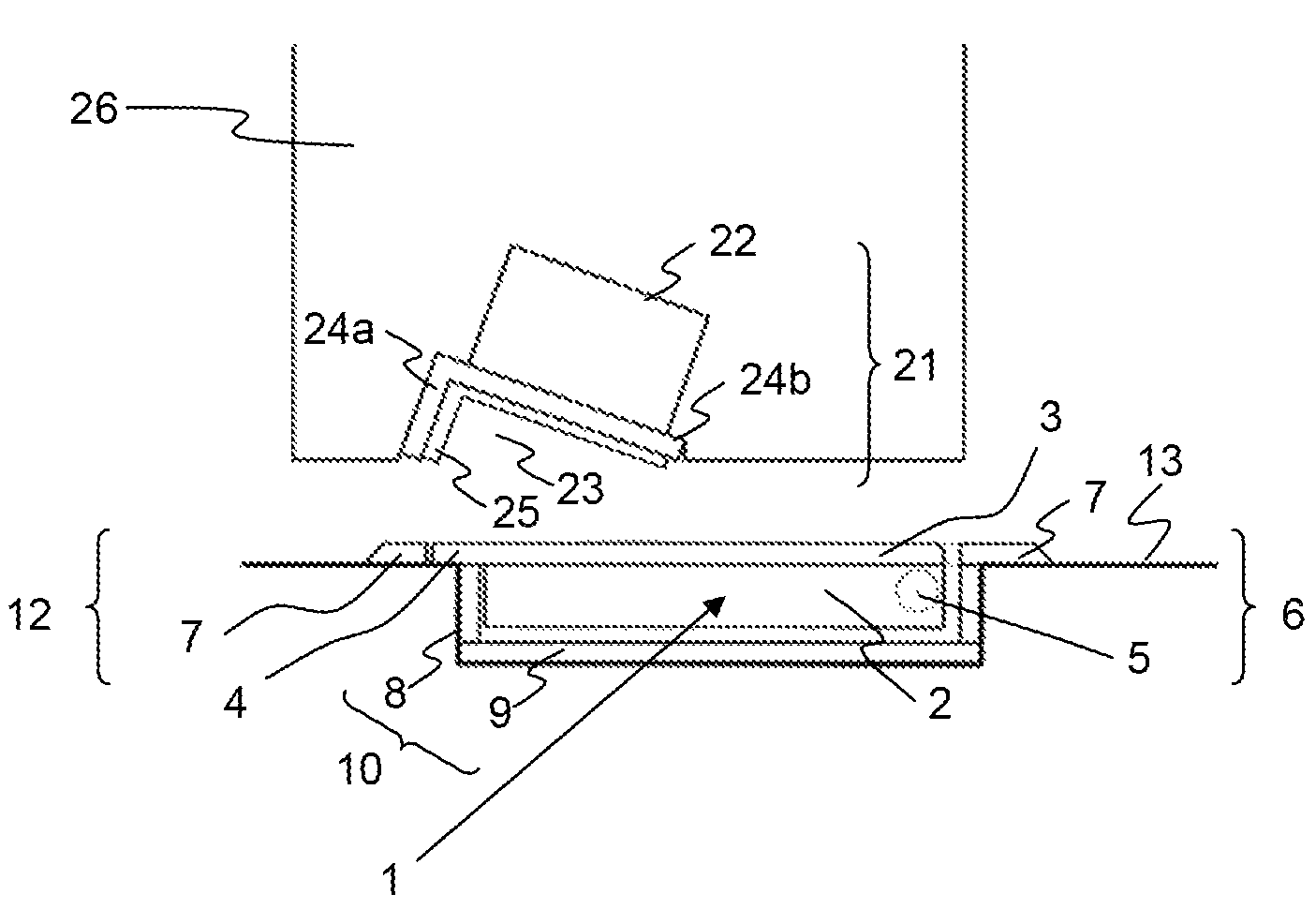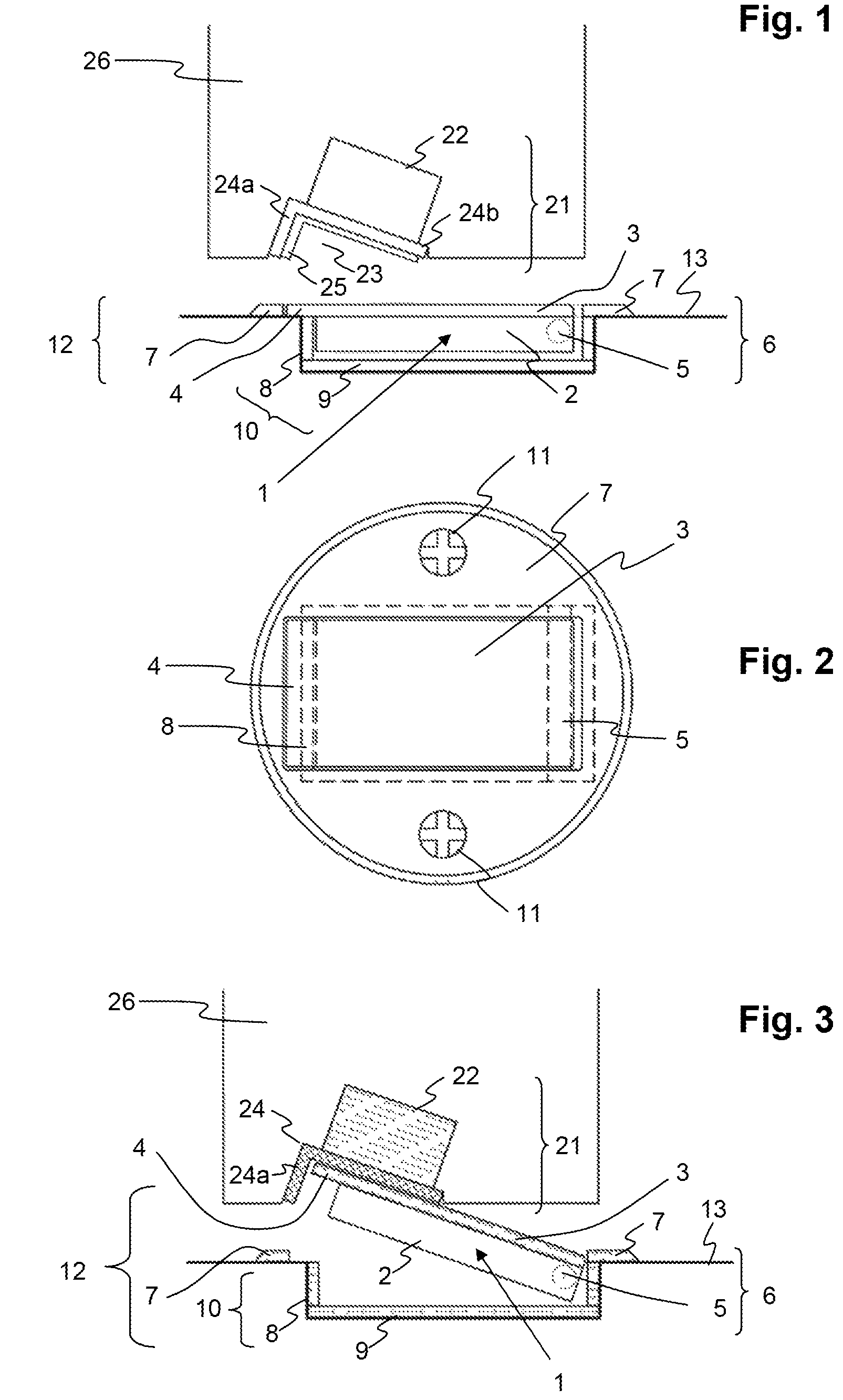Device for securing doors using magnetic attraction
a magnetic attraction and door technology, applied in the direction of wing fasteners, construction fastening devices, fastening means, etc., can solve the problems of disadvantageous visual appearance, weak magnetic attraction force of a conventional permanent magnet, inability to secure the door, etc., to prevent the possibility of an attraction effect on ferromagnetic parts, the effect of better dispersing the for
- Summary
- Abstract
- Description
- Claims
- Application Information
AI Technical Summary
Benefits of technology
Problems solved by technology
Method used
Image
Examples
Embodiment Construction
[0039]FIGS. 1 to 3 show one preferred embodiment of the invention, in which the same numbers in each case denote the same parts: a tilting element 1 is installed in the floor and equipped with a cover plate 3 composed of chromium steel and with a counter-sunk housing 6 with a bezel 7, likewise composed of a chromium steel plate of the same thickness. The tilting element 1 and the housing 6 together form a securing element 12. However, a tilting element 1 used without a housing 6 can also be referred to as a securing element 12.
[0040]A counter element 21 is installed in the bottom end face or bottom edge of a door 26. A notch 23 in the counter element 21 is provided to accommodate the raised tilting element 1. The notch 23 is covered by an angle profile 24, for example composed of metal or plastic. In addition, the surface of the angled profile 24 is equipped with a buffer zone 25 of elastic material, such as rubber. FIG. 3 shows an exemplary embodiment without a buffer zone 25.
[0041...
PUM
 Login to View More
Login to View More Abstract
Description
Claims
Application Information
 Login to View More
Login to View More - R&D
- Intellectual Property
- Life Sciences
- Materials
- Tech Scout
- Unparalleled Data Quality
- Higher Quality Content
- 60% Fewer Hallucinations
Browse by: Latest US Patents, China's latest patents, Technical Efficacy Thesaurus, Application Domain, Technology Topic, Popular Technical Reports.
© 2025 PatSnap. All rights reserved.Legal|Privacy policy|Modern Slavery Act Transparency Statement|Sitemap|About US| Contact US: help@patsnap.com


